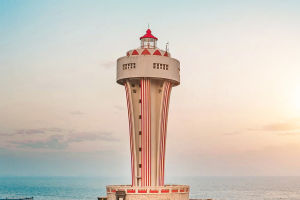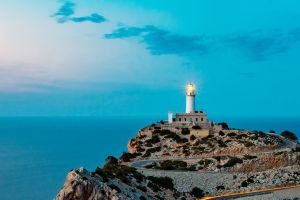Türkiye’s Cotton Castle, also known as Pamukkale, is a natural wonder located in the Denizli Province in southwestern Türkiye.
The site is a UNESCO World Heritage site and one of the most popular tourist destinations in the country. Pamukkale literally translates to "Cotton Castle" in Turkish, due to its striking white travertine terraces that resemble cotton or snow-covered cliffs.
The Cotton Castle is formed from the white calcium carbonate deposits that accumulate as water from hot springs flows over the terraced cliffs. These hot springs have been active for thousands of years, and the water that flows over the cliffs is rich in minerals such as calcium and magnesium. As the water evaporates, it leaves behind deposits of these minerals that build up over time, forming terraced cliffs.
The terraced cliffs of Pamukkale are truly breathtaking sights. The terraces are made up of multiple layers of white travertine, which have been formed over thousands of years by the flow of water from the hot springs.
The terraces are incredibly intricate and delicate, with pools of water at various levels, creating a stunning visual effect. The white color of the cliffs is due to the high concentration of calcium carbonate in the water, which gives them a pristine, snow-like appearance.
Visitors to Pamukkale can enjoy a variety of activities, including walking along the terraces, swimming in the hot springs, and exploring the nearby ruins of the ancient city of Hierapolis. The hot springs are believed to have therapeutic properties, and many visitors come to Pamukkale specifically to bathe in the warm, mineral-rich waters.
One of the most popular things to do at Pamukkale is to walk along the terraces and take in the stunning views. Visitors can climb up the terraces and walk through the pools of water, taking in the intricate patterns and designs created by the flow of the water. The terraces are also home to a variety of plant and animal species, including wildflowers and butterflies, adding to the natural beauty of the site.
Another popular activity at Pamukkale is swimming in the hot springs. The water in the hot springs is warm and soothing, and many visitors find it to be a relaxing and rejuvenating experience. There are several pools of varying temperatures, so visitors can choose the one that best suits their preferences.
Finally, visitors to Pamukkale can explore the nearby ruins of the ancient city of Hierapolis. Hierapolis was founded in the 2nd century BC and was a thriving center of commerce and culture for many centuries.
Türkiye’s Cotton Castle is a natural wonder that is well worth a visit. The stunning white terraces, warm hot springs, and rich history of the area make it a unique and unforgettable destination. Whether you are looking to relax and rejuvenate in the warm waters of the hot springs or explore the ancient ruins of Hierapolis, there is something for everyone at Pamukkale.


